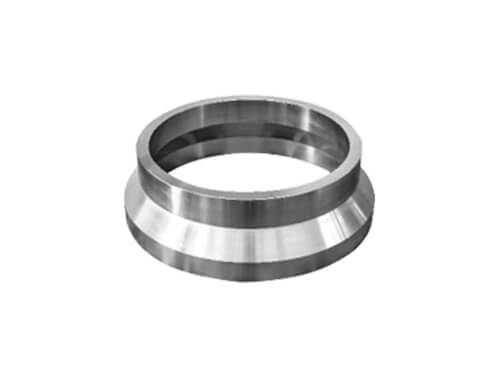
Details of kovar 4j29 alloy
Category:Company Dynamics | Date:2023-04-27
4J29 alloy, also known as Kovar alloy. This alloy has a linear expansion coefficient similar to that of borosilicate hard glass at 20-450 ℃, a high Curie point, and good low-temperature structural stability. The oxide film of the alloy is dense and can be well wetted by glass. And it does not interact with mercury, suitable for use in instruments containing mercury discharge. It is the main sealing structure material for electric vacuum devices.
-- Similar brands of 4J29:
Russia | USA | Britain | Japan | France | Germany |
29HК | Kovar | Nilo K | KV-1 | Dilver P0 | Vacon 12 |
29HК-BИ | Rodar Techallony Glasseal 29-17 | Telcaseal | KV-2 KV-3 | Dilver P1 | Silvar 48 |
Technical standard YB/T 5231-1993 for 4J29 materials:Technical conditions for iron nickel cobalt glass sealing alloys 4J29 and 4J44.
-- 4J29 Chemical Composition:
C | Mn | Si | P | S | Cu | Cr | Mo | Ni | Co | Fe |
≤ | ||||||||||
0.03 | 0.5 | 0.30 | 0.020 | 0.020 | 0.20 | 0.20 | 0.20 | 28.5~29.5 | 16.8~17.8 | surplus |
When the average linear expansion coefficient reaches the standard specified conditions, the nickel and cobalt content is allowed to deviate from the range specified in Table 1-2. The content of aluminum, magnesium, zirconium, and titanium should not exceed 0.10% each, and the total amount should not exceed 0.20%.
The performance test sample for the expansion coefficient and low-temperature structural stability specified in the 4J29 heat treatment system standard is heated to 900 ℃± 20 ℃ in a hydrogen atmosphere, held for 1 hour, then heated to 1100 ℃± 20 ℃, held for 15 minutes, and cooled to below 200 ℃ at a rate not exceeding 5 ℃/min.
The specifications and supply status of 4J29 varieties include wire, strip, plate, tube, and bar.
4J29 melting and casting processes are conducted using non vacuum induction furnaces, vacuum induction furnaces, or electric arc furnaces.
4J29 Application Overview and Special Requirements This alloy is a typical Fe Ni Co hard glass sealing alloy commonly used internationally. Stable performance after long-term use in aviation factories. Mainly used for glass sealing of electronic vacuum components such as emission tubes, oscillation tubes, ignition tubes, magnetrons, transistors, sealed plugs, relays, integrated circuit leads, chassis, casings, brackets, etc. In application, the expansion coefficient of the selected glass and alloy should be matched. Strictly inspect the low-temperature tissue stability according to the usage temperature. During the processing, appropriate heat treatment should be carried out to ensure that the material has good deep drawing and elongation performance. When using forged materials, their airtightness should be strictly inspected.
-- 4J29 Physical and Chemical Properties
4J29 thermal performance.
The melting temperature range of 4J29 is approximately 1450 ℃.
4J29 thermal conductivity.
θ/℃ | 100 | 200 | 300 | 400 | 500 |
λ/(W/(m·℃)) | 20.6 | 21.5 | 22.7 | 23.7 | 25.4 |
4J29 When the specific heat capacity is 0 ℃, the specific heat capacity is 440J/(kg • ℃); At 430 ℃, the specific heat capacity is 649J/(kg • ℃).
4J29 Line Expansion Coefficient Standard Regulations α 1(20~400℃)=(4.6~5.2) × 10-6℃-1; α 1(20~450℃)=(5.1~5.5) × 10-6 ℃ -1 (upper limit 5.6 when used for transistors × 10-6℃-1)。
4J29 density.
4J29 Electrical Performance.
4J29 resistivity ρ= 0.48 μ Ω·m.
θ/℃ | α/10-6℃-1 | θ/℃ | α/10-6℃-1 |
20~60 | 7.8 | 20~500 | 6.2 |
20~100 | 6.4 | 20~550 | 7.1 |
20~200 | 5.9 | 20~600 | 7.8 |
20~300 | 5.3 | 20~700 | 9.2 |
20~400 | 5.1 | 20~800 | 10.2 |
20~450 | 5.3 | 20~900 | 11.4 |
4J29 resistance temperature coefficient .
temperature range/℃ | 20~50 | 20~85 | 20~100 | 20~200 | 20~300 | 20~400 |
αR/10-3℃-1 | 3.7 | 3.7 | 3.9 | 3.9 | 3.7 | 3.3 |
4J29 magnetic performance.
4J29 Curie point Tc=430 ℃.
At 4000A/m, the residual magnetic induction intensity Br=0.98T, and the coercive force Hc=68.8A/m.
4J29 chemical performance alloy has good corrosion resistance in atmosphere, fresh water, and seawater.
H/(A/m) | B/T | H/(A/m) | B/T | H/(A/m) | B/T |
8 | 0.9×10-2 | 80 | 0.35 | 2000 | 1.47 |
16 | 2.1×10-2 | 160 | 0.81 | 4000 | 1.61 |
24 | 3.6×10-2 | 400 | 1.17 | ||
40 | 8.3×10-2 | 800 | 1.34 |
-- 4J29 Mechanical Properties
Performance specified in 4J29 technical standard.
The hardness of 4J29 deep drawn strip should comply with the provisions of Table 3-1. When the thickness is not greater than 0.2mm, no hardness test will be conducted.
The tensile strength of 4J29 wire and strip should comply with regulations.
Status | δ/mm | Hardness HV |
Plutonic state | >2.5 | ≤170 |
≤2.5 | ≤165 |
Status code | Status | σb/MPa | |
Silk material | strip | ||
R | Soft state | <585 | <570 |
1/4I | 1/4Hard state | 585~725 | 520~630 |
1/2I | 1/2Hard state | 655~795 | 590~700 |
3/4I | 3/4Hard state | 725~860 | 600~770 |
I | Hard state | >850 | >700 |
Mechanical properties of 4J29 at room temperature and various temperatures.
4J29 strip with a cold strain rate of 50% at different annealing temperatures.
The tensile properties of 4J29 tensile alloy (annealed state) at room temperature. Tensile properties of strips with a cold strain rate of 50% at different annealing temperatures.
σb/MPa | σP0.2/MPa | δ/% |
520 | 330 | 30 |
4J29 Durable and Creep Properties.
4J29 Fatigue Performance.
4J29 elastic performance.
4J29 elastic modulus E=138GPa.
-- 4J29 Organizational Structure
4J29 phase transition temperature γ → α The phase transition temperature is below -80 ℃.
4J29 Time Temperature Organization Transformation Curve.
Structure of 4J29 alloy After being treated according to the heat treatment system specified in 1.5, the alloy shall be frozen at - 78.5 ℃, and no martensite structure shall appear for more than or equal to 4h. But when the alloy composition is not appropriate, different degrees of austenite will occur at room temperature or low temperature(γ) Acicular martensite(α) The transformation is accompanied by a volume expansion effect. The corresponding increase in the expansion coefficient of the alloy leads to a sharp increase in internal stress of the sealing component, and even causes partial damage. The main factor affecting the low-temperature structural stability of alloys is their chemical composition. it can be seen that nickel is stable γ The main element of the phase, with a higher nickel content, is beneficial for γ Phase stability. As the total deformation rate of the alloy increases, its microstructure tends to become more stable. Alloy composition segregation may also cause localized γ → α Phase transition. In addition, coarse grains can also promote γ → α Phase transition.
4.4 The 4J29 grain size standard stipulates that the grain size of deep drawn strip should not be less than level 7, and grains smaller than level 7 should not exceed 10% of the area. When estimating the average grain size of strips with a thickness less than 0.13mm, the number of grains along the thickness direction of the strip should not be less than 8.
The thick strip with a cold strain rate of 60% to 70% is annealed at the temperature shown in Table 4-1 for 1 hour. After air cooling, it is graded according to Appendix A of YB 027-1992 and its grain size is determined.
annealing temperature/℃ | 675 | 700 | 750 | 800 | 900 | 1000 | 1100 | 1200 |
Grain size level | initial recrystallization | >10 | >10 | 10 | 7.5 | 5.0 | 4.0 | 3.0 |
-- 4J29 Process Performance and Requirements
4J29 formability This alloy has good cold and hot working properties and can be made into parts with various complex shapes. However, heating in sulfur-containing atmospheres should be avoided. During cold rolling, when the cold strain rate of the strip is greater than 70%, annealing will cause plastic anisotropy; When the cold strain rate is in the range of 10% to 15%, the alloy will cause rapid grain growth after annealing, which will also produce plastic anisotropy of the alloy. When the final strain rate is 60%~65% and the grain size is 7-8.5, its plastic anisotropy is the smallest.
4J29 welding performance: This alloy can be welded with copper, steel, nickel and other metals using methods such as brazing, fusion welding, and resistance welding. When the zirconium content in the alloy exceeds 0.06%, it will affect the quality of argon arc welding of the plate, and even cause weld cracking.
Before sealing the alloy with glass, it should be cleaned thoroughly, followed by high-temperature wet hydrogen treatment and pre oxidation treatment.
The heat treatment process of 4J29 parts can be divided into stress relief annealing, intermediate annealing, purification and degassing treatment, and pre oxidation treatment.
(1) Stress relief annealing is required to eliminate the residual stress of parts after mechanical processing: 470-540 ℃, insulation for 1-2 hours, furnace cooling or air cooling.
(2) Intermediate annealing is to eliminate the work hardening phenomenon caused by the cold rolling, cold drawing and cold stamping of the alloy, so as to facilitate the continuous processing. The workpiece needs to be heated to 750~900 ℃ in dry hydrogen, decomposed ammonia, or vacuum, kept at a temperature of 14 minutes to 1 hour, and then furnace cooled, air cooled, or water quenched.
(3) After the purification and degassing treatment of parts, wet hydrogen treatment is required before pre oxidation treatment, and oil removal should be carried out before treatment. Work requires heating to 950~1050 ℃ in saturated wet hydrogen, holding for 10~30min, and then furnace cooling.
(4) After wet hydrogen treatment, pre oxidation treatment is generally carried out on the alloy surface before melting and sealing, so as to generate a layer of uniform and dense oxide film on the alloy surface. The oxide film is firmly bonded to the substrate and can be well wetted with molten glass. After wet hydrogen treatment, the parts are oxidized in air at approximately 800 ℃. The weight gain of the parts should be within the range of 0.2~0.4mg/cm2 [10].
This alloy cannot be hardened by heat treatment.
The surface treatment process of 4J29 can be sandblasted, polished, and pickled.
After sealing the parts with glass, in order to facilitate welding, the oxide film generated during sealing needs to be removed. The parts can be heated to about 70 ℃ in a 10% hydrochloric acid+10% nitric acid aqueous solution and pickled for 2-5 minutes.
This alloy has good electroplating performance, and its surface can be plated with metals such as gold, silver, nickel, chromium, etc. To facilitate welding or hot pressing bonding between parts, copper, nickel, gold, and tin coatings are often plated. To improve the conductivity of high-frequency current and reduce contact resistance to ensure normal cathode emission characteristics, gold and silver coatings are often plated. To improve the corrosion resistance of devices, nickel or gold plating can be used .
The cutting and grinding performance of 4J29 alloy is similar to that of austenitic stainless steel. High speed steel or hard alloy cutting tools are used for processing, and low-speed cutting is used for processing. Coolants can be used during cutting. The alloy has good grinding performance.

